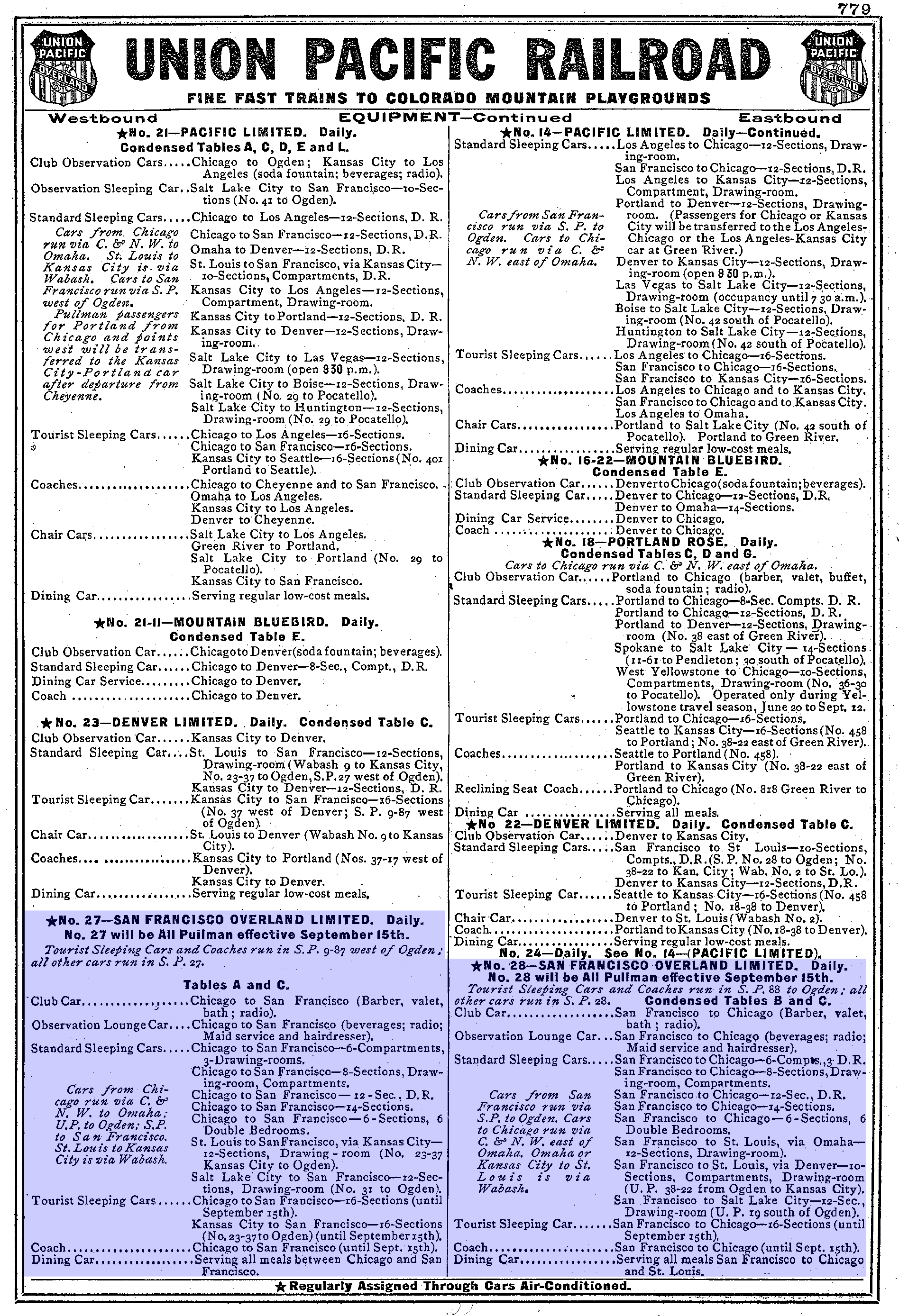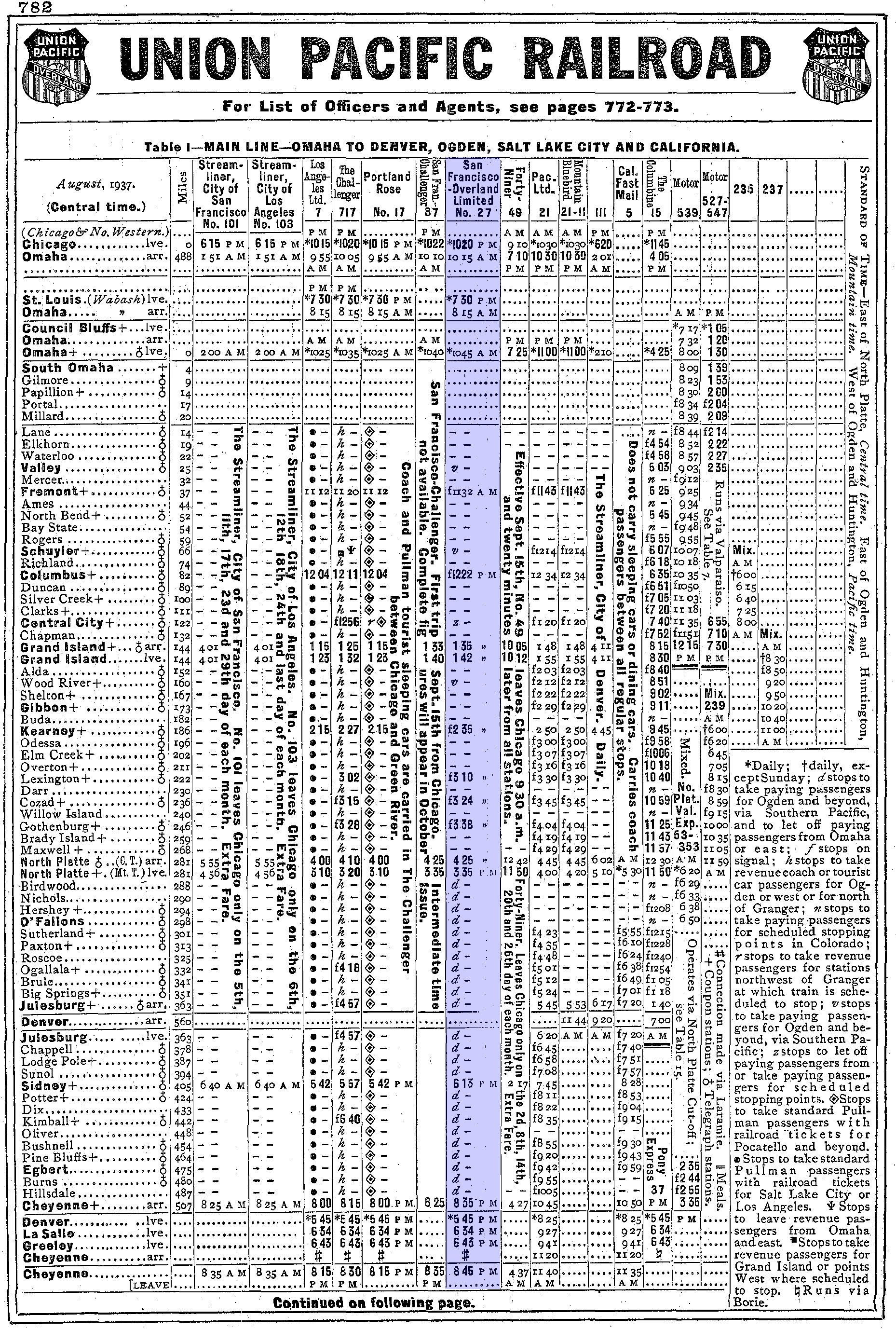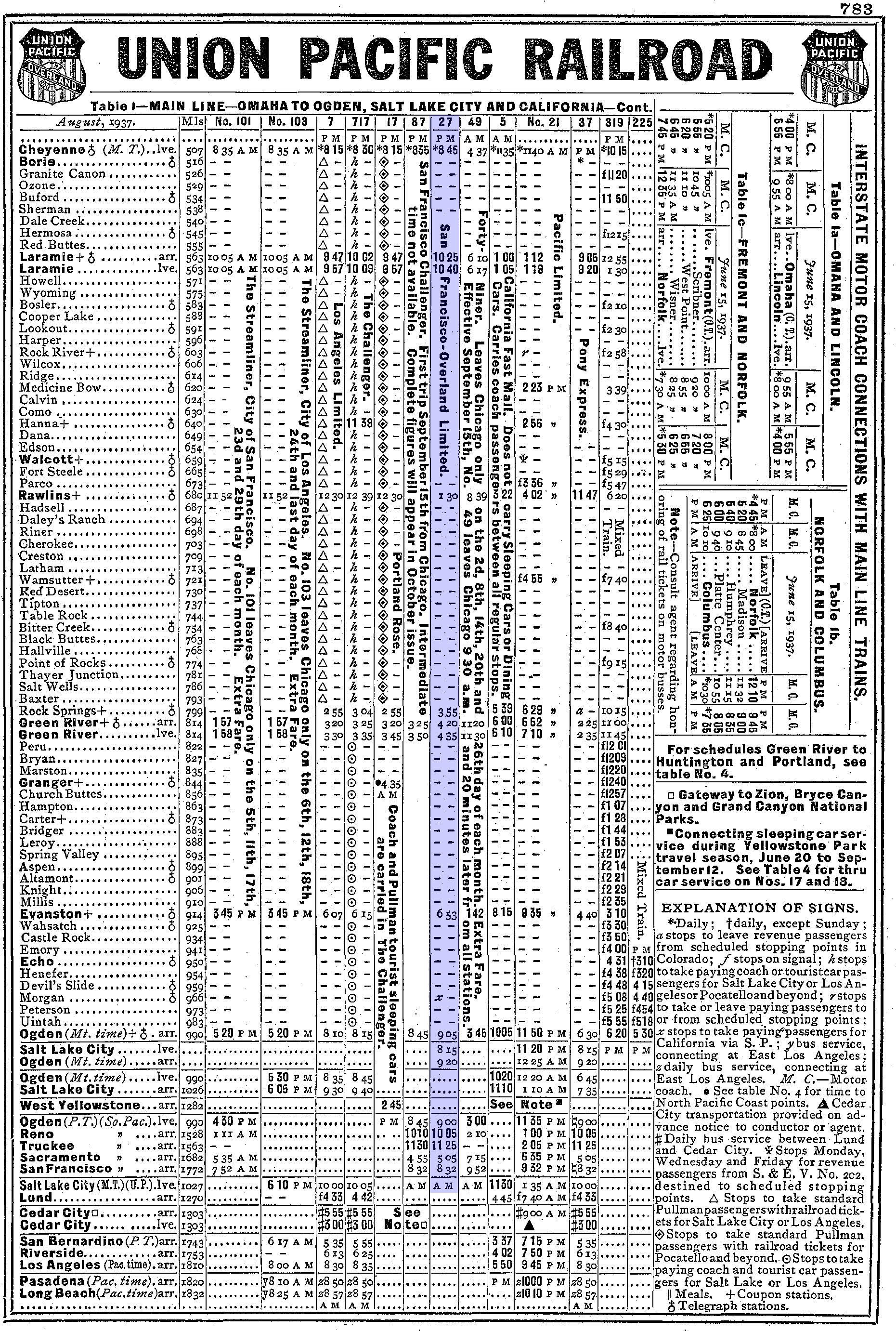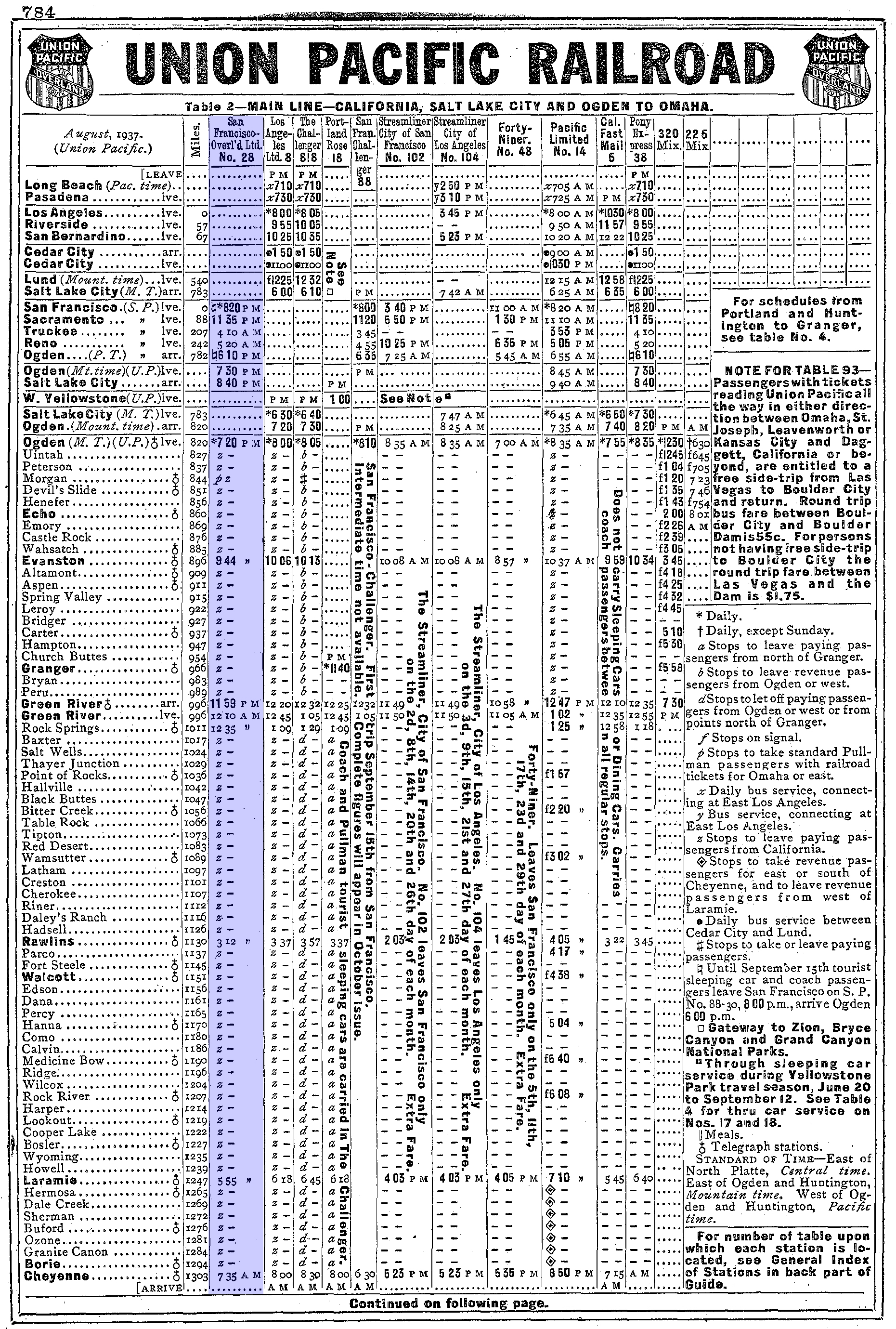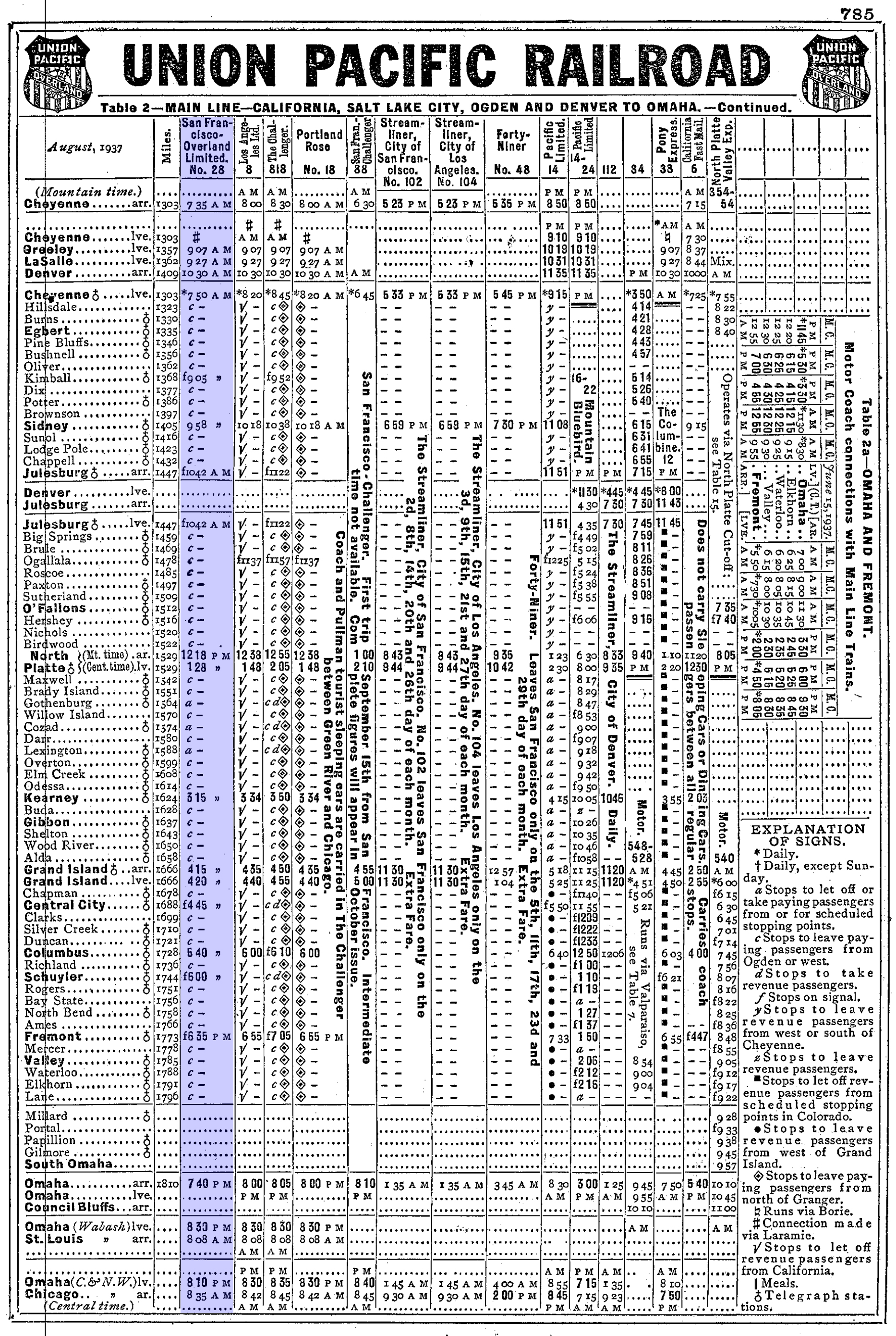"San Francisco Overland " (Train): Consist, Timetables, Route
Last revised: September 11, 2024
By: Adam Burns
The San Francisco Overland, also known as the Overland Limited, was a long running train operated by the Union Pacific, Southern Pacific, and Chicago & North Western between San Francisco and Chicago.
The service was initially launched in 1887 by Union Pacific as a standalone train providing connections at the railroad's eastern and western end points.
It had expanded into a transcontinental service by the early 20th century and became known for its luxurious, all-Pullman accommodations and scenic routes, offering passengers a unique view of the American West.
The Overland lost its first-class status in the streamliner era, bumped by Union Pacific's premier City fleet. The train finally disappeared in 1963 when it was largely combined with the City of San Francisco.
Photos
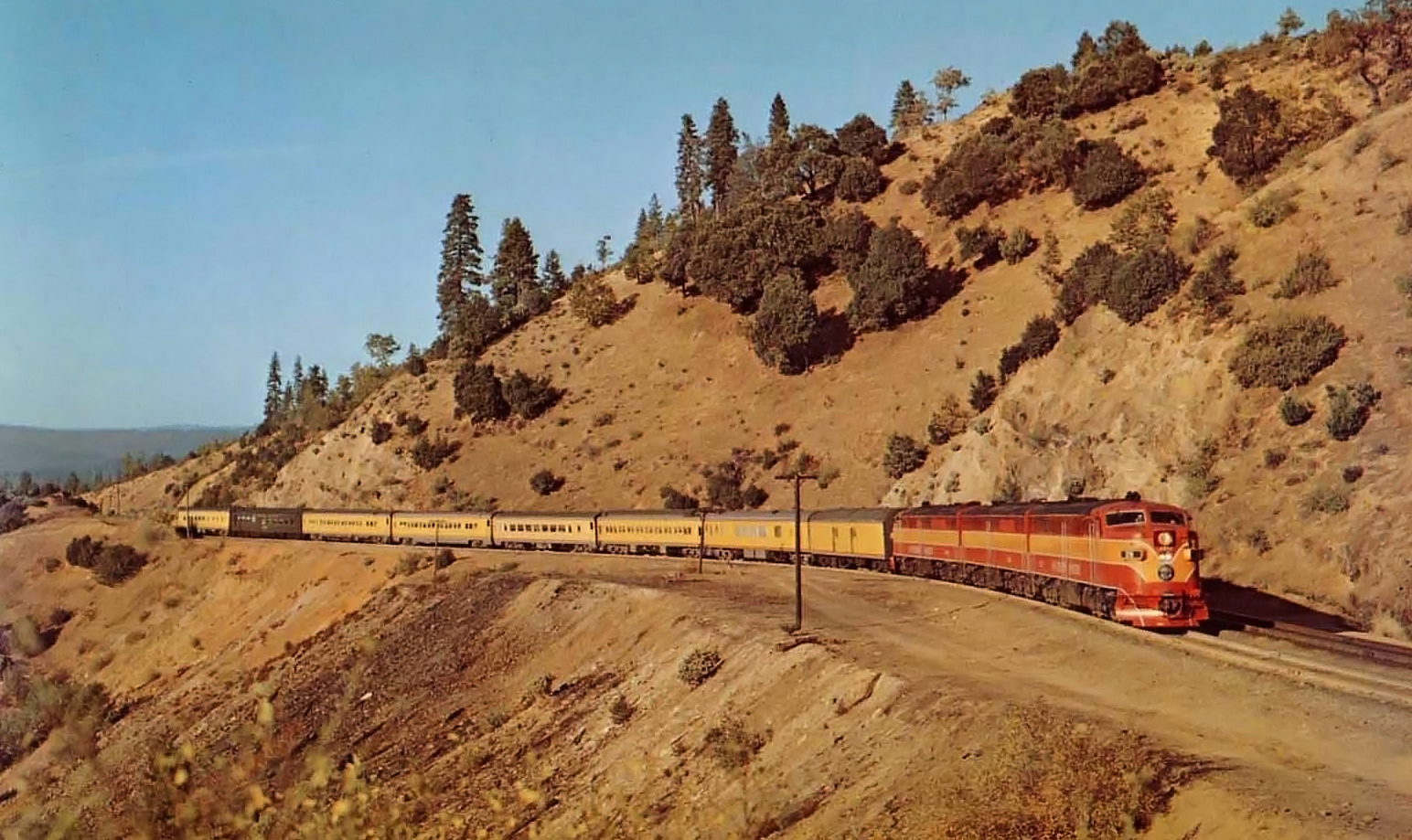 A Southern Pacific publicity photo featuring train #28, the eastbound "San Francisco Overland" (San Francisco - Chicago), approaching Cape Horn in the Sierra Nevada near Colfax, California during the 1950s.
A Southern Pacific publicity photo featuring train #28, the eastbound "San Francisco Overland" (San Francisco - Chicago), approaching Cape Horn in the Sierra Nevada near Colfax, California during the 1950s.Overland Limited
The San Francisco Overland was a prestigious train offering a transcontinental service from the windy city of Chicago to the bustling hub of San Francisco.
The train's origins begin on November 13, 1887 when Union Pacific launched the Overland Flyer between Omaha, Nebraska and Ogden, Utah. At that time it provided eastbound connections with the Chicago & North Western to reach Chicago as well as Southern Pacific's Pacific Express to reach Oakland/San Francisco.
The train slowly blossomed into what became the San Francisco Overland. On November 17, 1895, UP renamed the train as the Overland Limited.
On October 15, 1899, Southern Pacific launched its own train by the same name west of Ogden describing it as, "An Elegant Solid Vestibuled Train of Composite Car, with library, Smoking Parlor, Buffet, etc. Luxurious Double Drawing-room Sleeping Cars, Dining Car. The Fastest Overland service in the history of transcontinental railroading."
On January 1, 1913 the train became an extra fare service. It was officially renamed as the San Francisco Overland Limited on May 31, 1931, changing its train numbers from 1-2 to 27-28. The "Limited" was later dropped altogether on July 10, 1947.
Consist (1937)
Route
The route of the San Francisco Overland covered 2,460 miles between Chicago and San Francisco. This train commenced its adventure in Chicago, then rolled across the span of numerous states, including Illinois, Iowa, Nebraska, Wyoming, Utah, Nevada, before arriving at its final destination in San Francisco.
The train began its journey at Chicago's North Western Terminal, carrying passengers across key cities such as Omaha, Salt Lake City, and Ogden before pulling into the last stop, San Francisco's Oakland Mole (otherwise known as the Oakland Long Wharf).
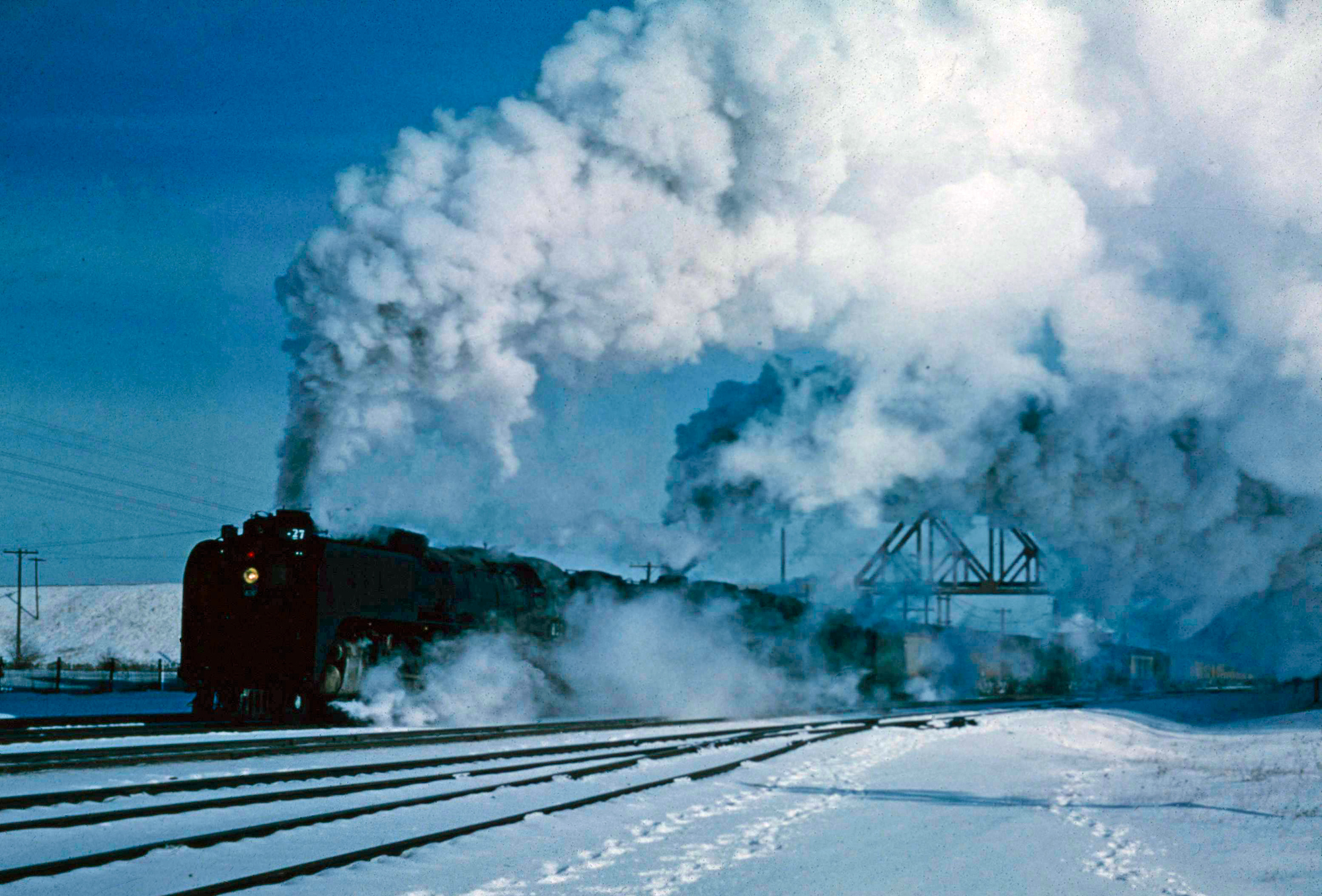 Union Pacific 4-8-4 #830 steams out of Cheyenne, Wyoming with train #27, the westbound "San Francisco Overland," on a cold December 31, 1955. Photographer unknown. American-Rails.com collection.
Union Pacific 4-8-4 #830 steams out of Cheyenne, Wyoming with train #27, the westbound "San Francisco Overland," on a cold December 31, 1955. Photographer unknown. American-Rails.com collection.During its peak years, the San Francisco Overland presented its guests an unforgettable on-board experience filled with a variety of services. This included a dining car serving delectable meals, a baggage car, and a combination car with a smoker lounge where passengers could relax and interact.
Astonishing its patrons with its luxurious amenities, the train carried numerous Pullman sleeping cars allowing guests to retire comfortably during the long journey. These compartments provided various accommodations ranging from spacious drawing room suites to cost-effective open sections, ensuring a comfortable journey for all.
City of San Francisco
The advent of the City of San Francisco in 1936 was a momentous occasion in railroad history. Although it drew in a new age of fast, streamline trains, it also marked the beginning of a steady decline for the older, and slower Overland.
The City of San Francisco, with its Art Deco styling, air-conditioned comfort, and faster travel times, began attracting the cream of passenger traffic.
Despite the decline, the San Francisco Overland held its ground as an important connector between urban centres and remote regions of the American West. It continued to serve those who preferred the leisurely pace and affordable fares over the flashy new streamliners.
Unfortunately, despite its relentless spirit, the train was eventually edged out of the market. The punishing competition, coupled with rising operational costs and dwindling patronage, forced the San Francisco Overland to bow out of service.
The San Francisco Overland disappeared as a separate train on January 2, 1963 when it was combined with other services. The name was subsequently dropped altogether from UP's timetable on September 24, 1967.
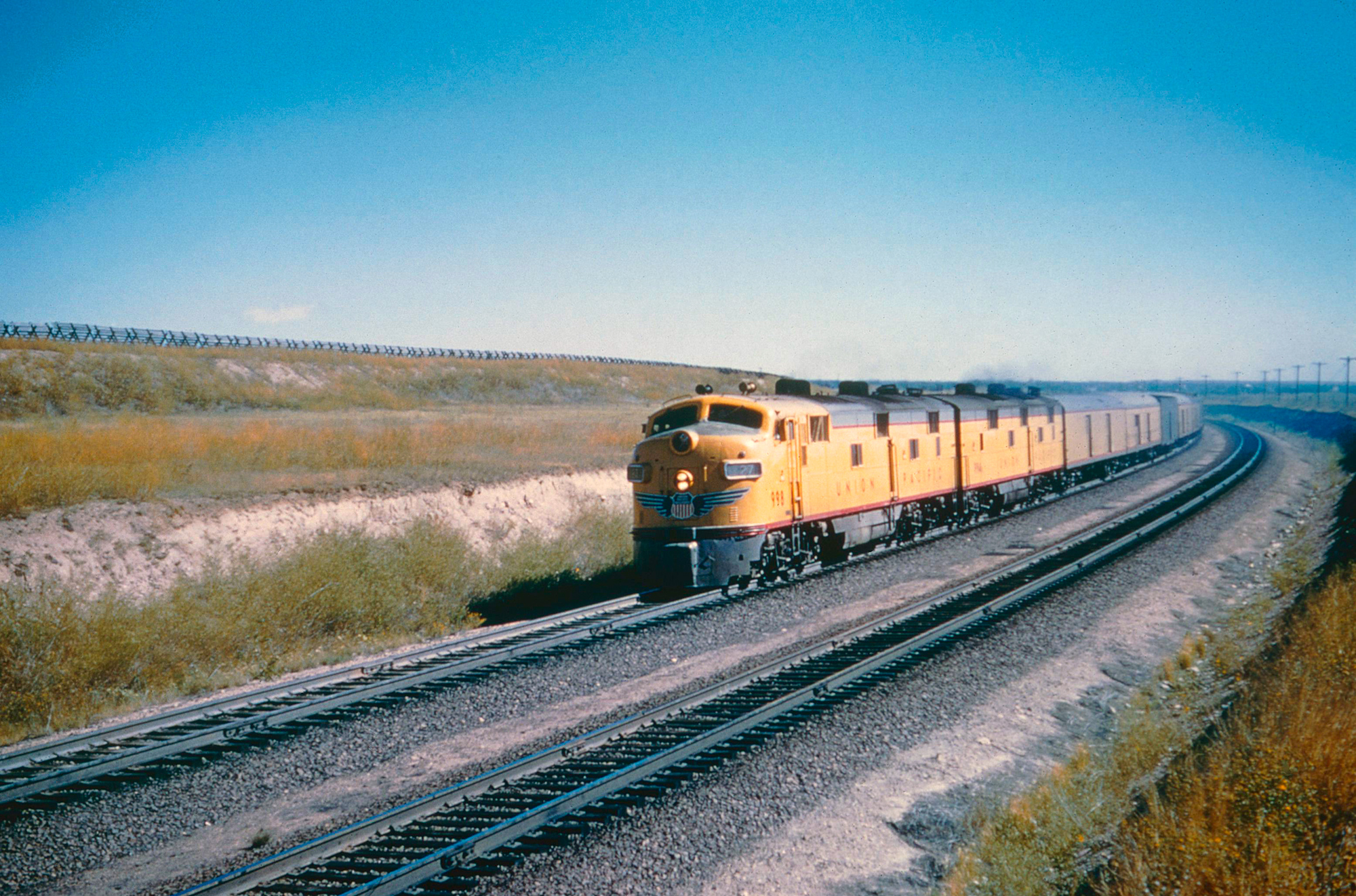 Union Pacific E7A #998 leads train #27, the westbound "San Francisco Overland," over Wyoming's Sherman Hill, circa 1960. Photographer unknown. American-Rails.com collection.
Union Pacific E7A #998 leads train #27, the westbound "San Francisco Overland," over Wyoming's Sherman Hill, circa 1960. Photographer unknown. American-Rails.com collection.Legacy
The legacy of the San Francisco Overland is not limited to the locomotives it ran or the routes it served. It is equally etched in the delightful memories of its passengers and the invaluable experiences it offered.
Today, while the train might not physically exist, its spirit permeates the American railroad landscape. It serves as a testament to the changing paradigms of rail travel and the endurance of the industry amidst challenges.
As we revisit the journey of the San Francisco Overland, we appreciate not just the train itself, but also its contribution to bridging distances and accelerating social mobility. Over its many miles, it carried within it the dreams and hopes of countless passengers.
In its later years Alco's beautiful PA could be found leading the train over the Southern Pacific leg while the Milwaukee Road later replaced Chicago & North Western in October, 1955.
Timetable (1937)
In the annals of railroading history, the San Francisco Overland is testament to the human spirit of innovation, resilience, and adaptation. It lends a tangible existence to moments that have passed, inspiring future generations to chase newer horizons.
Complementing the material history of the train are the vivid memories painted by its countless passengers. Their diverse experiences, told and retold over generations, have added rich hues to the narrative of this iconic train.
Future journeys in the realm of railroading must linger a while, gleaning from the journey of the San Francisco Overland. It provides an invaluable insight into the resilience and adaptability required to navigate the ebbs and flows of time, fashioning an eternal journey.
Thus, the train lives on—its story forever imprinted in the collective memory, its tracks now arterial conduits for modern rail travel. It manifests the cycle of evolution, holding fort as the harbinger of the golden age of American railroads.
Now coated in the rust of time, the once gleaming rails and rolling cars stand as poignant reminders of a time when steel giants roamed the land, conquering the vast expanses of American landscapes.
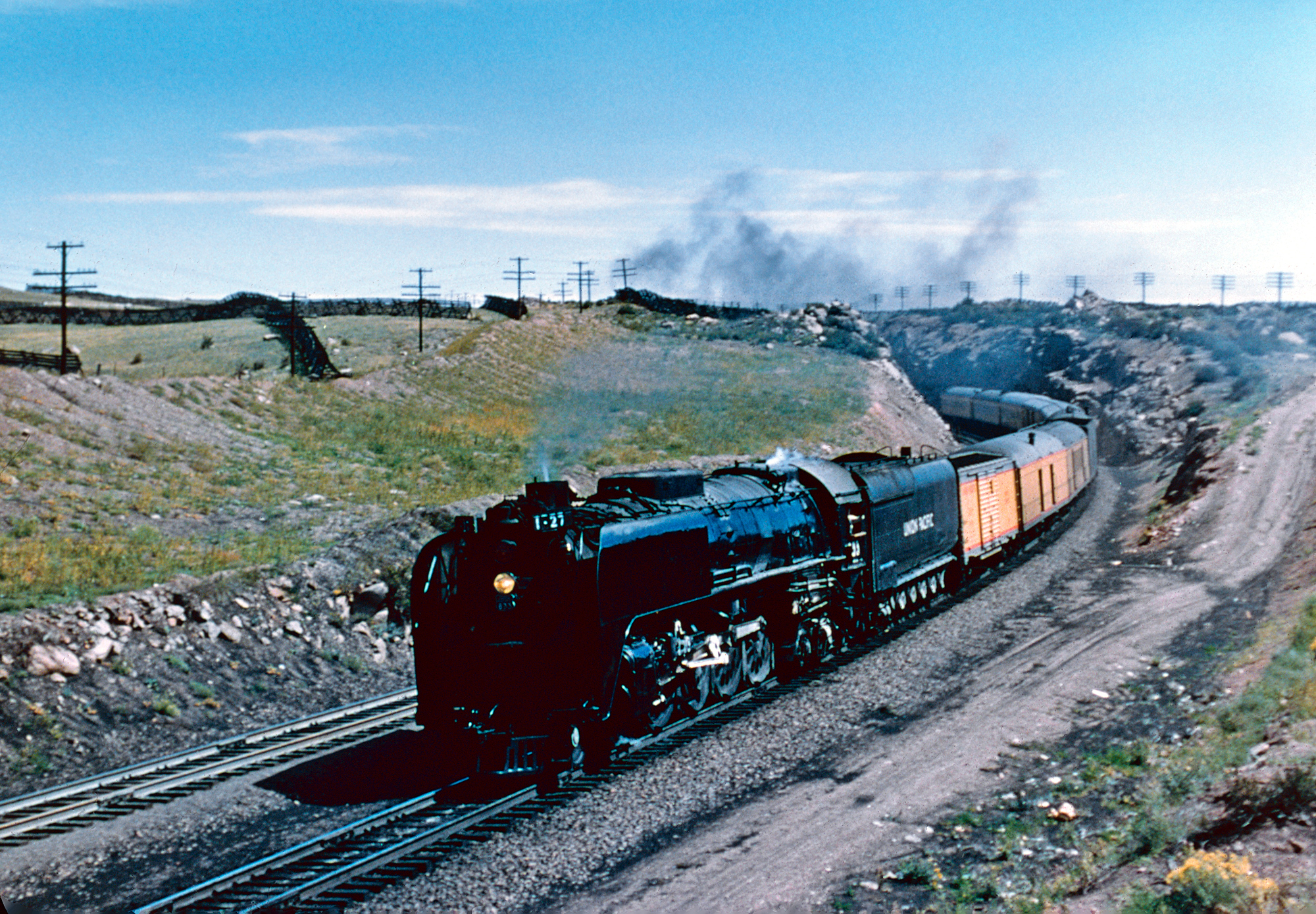 Union Pacific 4-8-4 #833 exits Hermosa Tunnel at the summit of Sherman Hill with train #27, the westbound "San Francisco Overland," on September 2, 1955. J.E. Shaw photo. American-Rails.com collection.
Union Pacific 4-8-4 #833 exits Hermosa Tunnel at the summit of Sherman Hill with train #27, the westbound "San Francisco Overland," on September 2, 1955. J.E. Shaw photo. American-Rails.com collection.Unfazed by time or tide, the saga of the San Francisco Overland is one of irrepressible spirit; an anthem that resounds in the synchrony of steel on railroad track. As we ponder over its past, we allow its vintage strains to permeate the moment, whispering sagas of time that have gone by.
Through its life, the train embraced its transformation as a testament to the changing times. And even in its twilight, it signalled the dawn of a new era.
The train may not roll on the tracks anymore, but its echoes still resonate in the slice of history it has left behind. Today, it stands not just as the San Francisco Overland, but also as an embodiment of the quintessential American spirit.
Sources
- Schafer, Mike and Welsh, Joe. Streamliners, History of a Railroad Icon. St. Paul: MBI Publishing, 2003.
- Solomon, Brian. Southern Pacific Railroad. St. Paul: Voyageur Press, 2007.
- Welsh, Joe and Holland, Kevin. Union Pacific Railroad. Minneapolis: Voyageur Press, 2009.
Contents
Recent Articles
-
Oregon - Wine Tasting - Train Rides
Dec 29, 25 10:51 AM
For those looking to explore this wine paradise in style and comfort, Oregon's wine tasting trains offer a unique and enjoyable way to experience the region's offerings. -
North Carolina - Wine Tasting - Train Rides
Dec 29, 25 10:46 AM
A noteworthy way to explore North Carolina's beauty is by hopping aboard the Great Smoky Mountains Railroad and sipping fine wine! -
Nevada - Wine Tasting - Train Rides
Dec 28, 25 03:26 PM
While it may not be the first place that comes to mind when you think of wine, you can sip this delight by train in Nevada at the Nevada Northern Railway.

